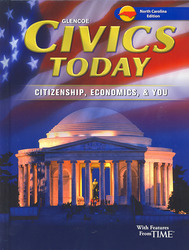

Civics Today: Citizenship, Economics & You © 2008Chapter 14: Local Government and FinancesChapter OverviewsThe General Assembly creates North Carolina's local governments and decides what authority and responsibility they have. The two basic types of local government in North Carolina are counties and the municipalities—cities, towns, and villages. Local governments cooperate with state and federal policy to carry out many public programs. Examples are public education, law enforcement, and land-use planning. The General Assembly has divided North Carolina into 100 counties. North Carolina has more than 540 municipalities. Voters control local government by electing officials, such as the city council or county board of commissioners. State officials must create a balanced budget for operating their government each year. Sometimes lawmakers must raise taxes or cut services to balance the budget. Borrowing provides lawmakers with additional funds but also has disadvantages. Like the state government, each North Carolina county and municipality must adopt a budget every year. Local governments face many of the same financial pressures as the state government. Municipalities and counties use a variety of means to raise revenue. |  |















